
When I started teaching horticulture in the 1980s, there was a love affair going on with coneflowers (Echinacea spp. and cvs.). There were a handful of tried-and-true cultivars to choose from, but plant breeders were just starting to explore the possibilities of expanding the coneflower palette. In 1989, Allan Armitage’s second edition of Herbaceous Perennial Plants listed a whopping 12 cultivars. Fast-forward to 2010: Armitage’s third edition lists 34 coneflower cultivars. A slew of new varieties are introduced each year, and no one, including me, can keep up.
When it comes to the varieties of coneflowers out there, you can classify each as an “oldie” or a “newbie.” Many of the older cultivars have proven their worth, with ‘Magnus’ being the gold standard. But some new varieties are worth trying, too. These exciting selections offer a startling world of different colors, forms, and sizes. Until you are sure of how hardy these new coneflowers are in your area, only buy one plant and trial it. I have spoken to sources all across the country, and I still haven’t gotten a consensus on which new varieties work in a given area and which ones don’t.
By the time you read this article, there are sure to be many more coneflowers on the market to choose from. But when you’re shopping at nurseries this year, remember: All men are created equal, but not all coneflowers are.
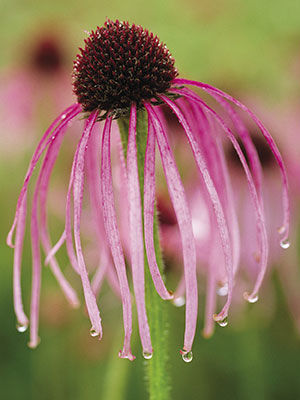
A unique, understated beauty
Name: Pink coneflower (Echinacea pallida)
Size: 2 to 3 feet tall and 2 feet wide
For those who want a coneflower that looks like no other, try pink coneflower. It is native to western prairies but thrives in dry, open spaces throughout Zones 4 to 8. Pink coneflower has dark cones and drooping petals, is widely adaptable to different soil types, and has better drought tolerance than other coneflowers. Native Americans even used this species for medicinal purposes. When small children wandered off the Oregon Trail in the mid-1800s to pick wildflowers for their mothers, it’s more than likely that they returned with a fistful of these flowers.
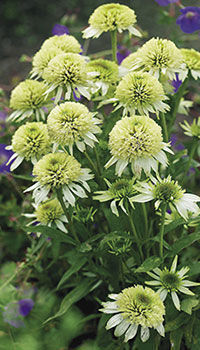
Small stature and standout blooms
Name: ‘Meringue’ purple coneflower (E. purpurea ‘Meringue’)
Size: 18 to 20 inches tall and wide
Gardeners go gaga for ‘Meringue’ because it looks so different. This is a short coneflower with creamy, light yellow–green flowers. The top looks like a pom-pom surrounded by single petals at the base. This plant is exceptionally sturdy. Although the blossoms are smaller than other double-flowered cultivars, there are tons of them and they cover the plant throughout most of the summer.
Kooky coloring gives these cones an edge
Name: ‘Tiki Torch’ coneflower (E. ‘Tiki Torch’)
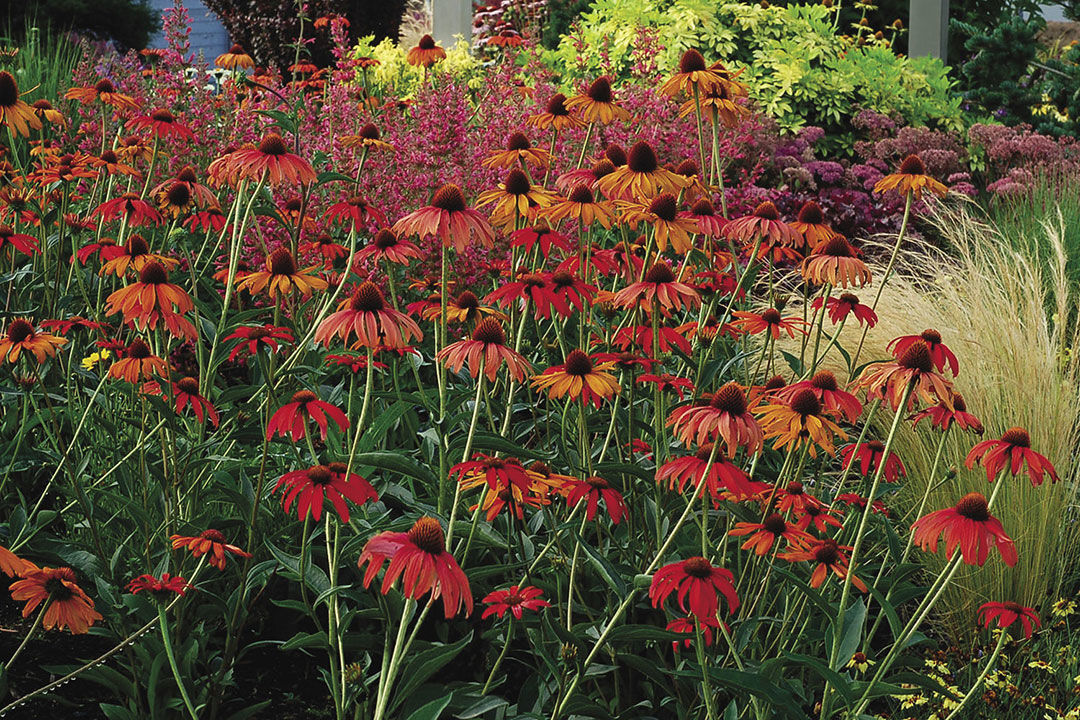
Size: 3 feet tall and 2 feet wide
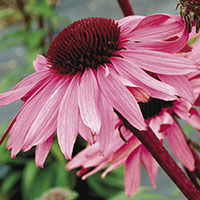
Name: ‘Merlot’ purple coneflower (E. purpurea ‘Merlot’)
Size: 30 inches tall and wide
The claim to fame for many of the newest coneflowers on the market is their unbelievable hues. ‘Merlot’ has large pink flowers, an orange cone, and striking black stems in early summer. ‘Tiki Torch’ boasts big orange flowers that retain their color in the heat, unlike other pumpkin-colored coneflowers. ‘Tomato Soup’ is a brilliant red. For those who like the “wow” factor in their beds, these options are perfect.
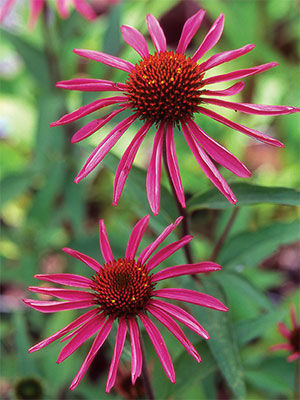
Toughness is this plant’s middle name
Name: ‘Pica Bella’ purple coneflower (E. purpurea ‘Pica Bella’)
Size: 2 feet tall and wide
From 2007 to 2009, the Mt. Cuba Center in Greenville, Delaware, trialed 48 different coneflowers and evaluated their performance. While the cultivar ‘Pica Bella’ did not stand out as being unique in the looks department, it held up the best in heat and drought. It is easy to grow and extremely vigorous, forming a sturdy vase shape that needs no staking.
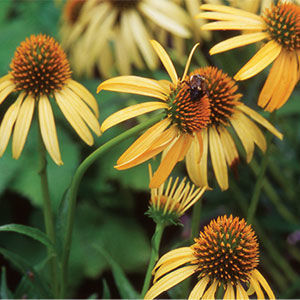
The best characteristics from all the contenders
Name: Mango Meadowbrite™ coneflower (E. ‘CBG Cone 3’)
Size: 30 inches tall and wide
Jim Ault, whom I consider the “Merlin of Echinaceas,” practices his magic at the Chicago Botanic Garden. The first year that I visited him and saw the coneflowers there, I was speechless. Oranges and yellows—previously unheard of in the coneflower world—abounded. They were a mix of the species E. purpurea, E. paradoxa, and E. tennessensis, with the best traits of all three including large cones, long petals, medium size, and winter hardiness. The result was the Meadowbrite™ series, which broke the color code of coneflowers and includes the now-famous Mango Meadowbrite™. This cultivar has slightly fragrant, peach-hued blooms that bend downward. This plant looks best in a naturalistic setting.
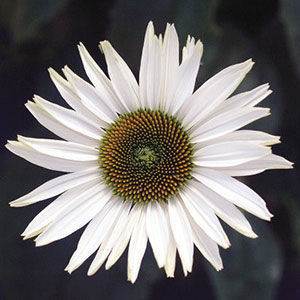
Its sweet smell will put a smile on your face
Name: ‘Fragrant Angel’ purple coneflower (E. purpurea ‘Fragrant Angel’)
Size: 3 feet tall and 2 feet wide
We all know that coneflowers have beautiful blossoms, but only a select few are scented, too. Of these, ‘Fragrant Angel’ is my favorite because its scent is not overpowering; it smells like sweet perfume. The tall, vigorous plants are strongly branched and flower profusely all summer long. The white blossoms last especially long in cut-flower bouquets.
••• Supernew option:
The fragrant cultivar ‘Virgin’ may turn out to be a contender to replace ‘Fragrant Angel’. Its long-lasting blooms are white with a green center.
Behemoth blossoms set this one apart
Name: Big Sky™ Harvest Moon coneflower (E. ‘Matthew Saul’)
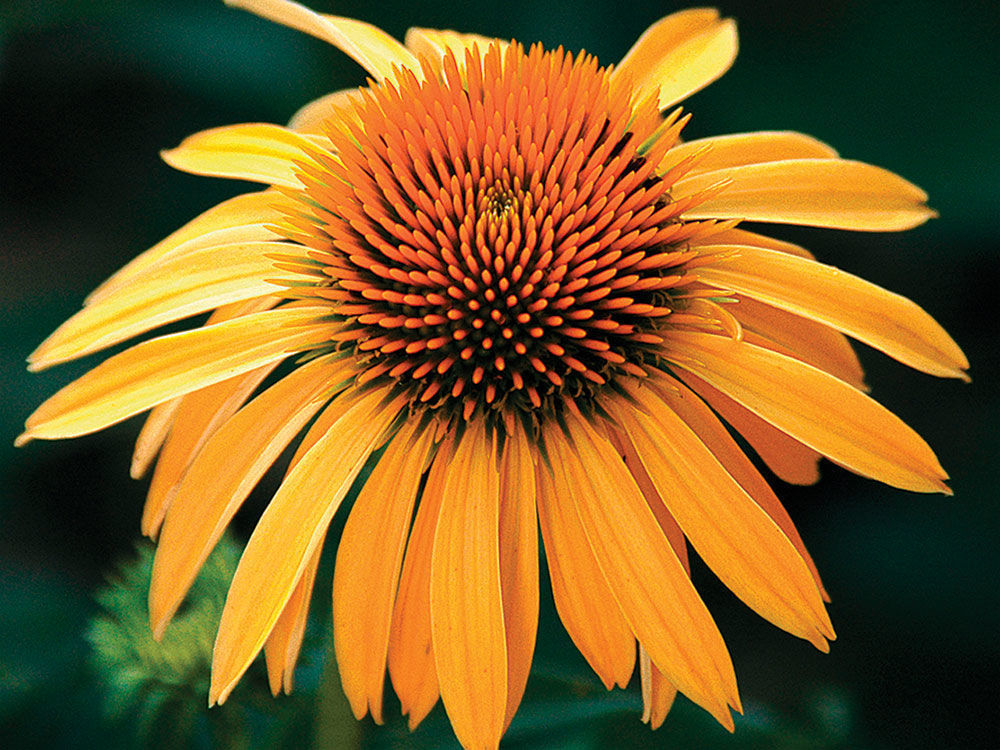
Size: 24 to 30 inches tall and 18 to 24 inches wide
The Big Sky™ series of coneflowers is known for its large-flowered cultivars. My favorite is Harvest Moon. Its yellow petals, amber cone, and wonderful citrusy smell appeal to me. Each blossom can be up to 3 inches wide. The dense plants will rebloom even without deadheading. There are other cultivars in this series—in shades of magenta, orange-red, burnt orange, and rosy purple—but Harvest Moon holds its color well throughout the season, so it’s my pick of the bunch.
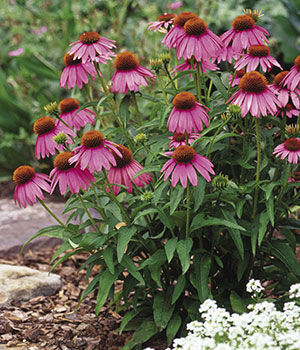
Who says short can’t be showy?
Name: ‘Kim’s Knee High’ purple coneflower (E. purpurea ‘Kim’s Knee High’)
Size: 1 to 2 feet tall and wide
The first really short coneflower was ‘Kim’s Knee High’. Although its hardiness was a problem when it was introduced years ago, the kinks have now been worked out, and it is a must-have for smaller spots. The plant is squat and compact, and it won’t flop over under its own weight.
••• Supernew option:
‘Red Knee High’ is the newest addition to this group of shorties and has dark magenta blooms.
A delicious double that looks like a scoop of ice cream
Name: ‘Pink Double Delight’ purple coneflower (E. purpurea ‘Pink Double Delight’)

Size: 2 feet tall and wide
People think that a double-blossomed coneflower looks like either a yummy ice cream cone or a badminton shuttlecock, depending on whether they love it or hate it. Most gardeners are enamored with these pompons, so they are big sellers. ‘Pink Double Delight’ is popular because the plant is compact, produces tons of blooms, and has exceptional hardiness. To me, it looks like a pink mum. Although it is not my cup of tea, I would never stop anyone from purchasing what he or she likes. After all, beauty is in the eye of the beholder.
The ABCs of Coneflowers
Echinacea spp. and cvs.
USDA Hardiness Zones: 3 to 9
A. Keep the conditions consistent
Coneflowers are tough plants native to the western prairies. They adapt well to drought, heat, and a number of different soil types. Most are hardy throughout the country and flourish in full sun. When pushed into too much shade, they tend to stretch and get leggy. Coneflowers resent overwatering, so be sure to plant them in well-drained soil. The flowers of some cultivars naturally droop—but that’s their habit, so don’t assume the plant needs water. Wet feet will result in rot and a quick, certain death.
B. Watch out for one disease
Consistent conditions will help you avoid aster yellows disease, which causes disfigured or discolored blooms. This disease is primarily transmitted by leafhoppers and can become widespread in cool, wet summers. If a plant becomes infected, remove it immediately and put it in the trash—not on the compost pile.
C. Don’t be alarmed by their short life span
The sad fact is that most coneflowers do not live for a long time. Perhaps it’s because they expend so much energy each year to flower so prolifically. Most of those listed here are what I consider to be long-lived, meaning they will stick around for at least three years. You can improve a coneflower’s chances for a long life by ensuring proper drainage and providing some winter protection. But if your zone experiences a long, cold, wet winter, you can probably kiss your coneflowers good-bye and say hello to a few new ones.
D. Allow them to self-sow
Don’t be discouraged by the short life expectancy of coneflowers because they make up for it. If you leave the seedpods in place at the end of the season, you’ll get plenty of babies the following year and the birds will love you for it.
How to Use Your Coneflowers
You can’t put just any coneflower anywhere. The size and growth habit of a given cultivar largely dictate where it should be planted because you want to accentuate the best attributes, while at the same time skillfully mask its not-so-great traits.
Short and squat
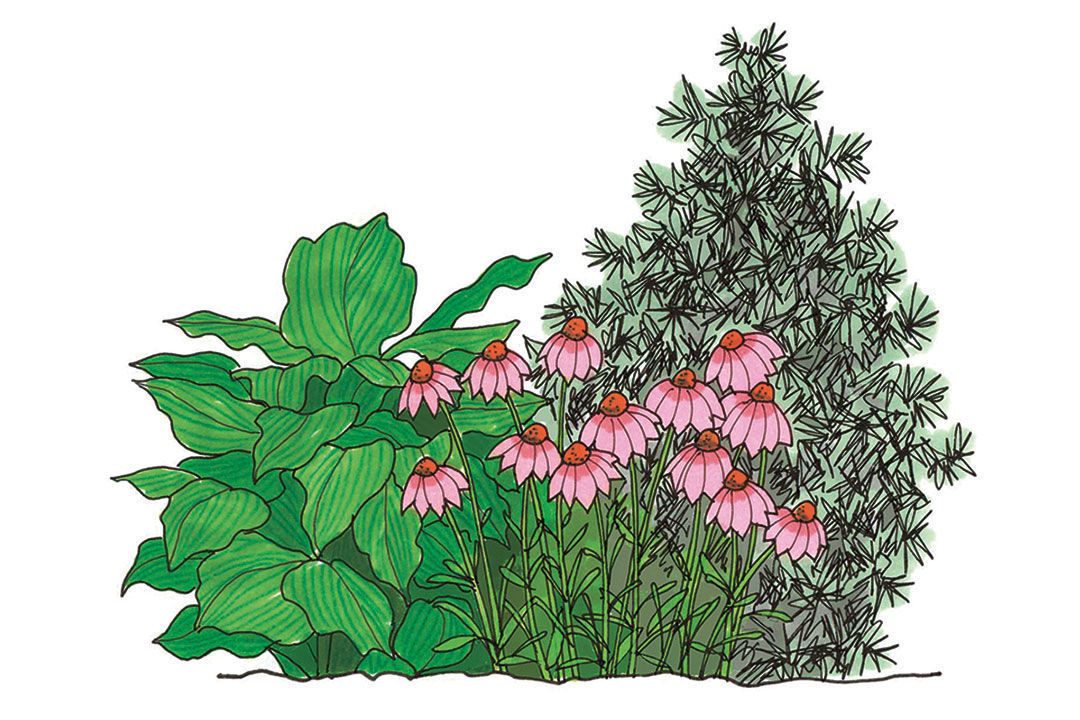
If you nestle dwarf varieties, like ‘Kim’s Knee High’, in between two ho-hum shrubs or perennials, the dynamic of the combination switches from drab to fab.
Midsize with bare legs
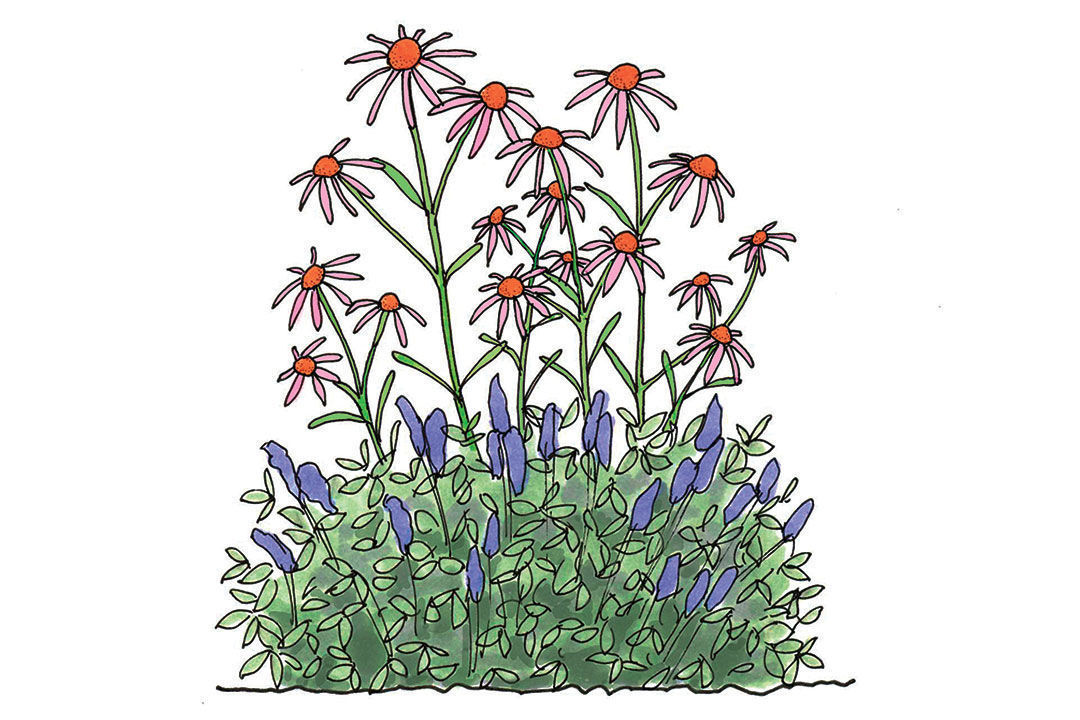
Average-size coneflowers, like ‘Pica Bella’, tend to be vase shaped and, therefore, have sparse bases. Be sure to plant a fluffy, low-growing companion in front of these coneflowers so that their skinny bottoms are concealed.
Tall and wispy
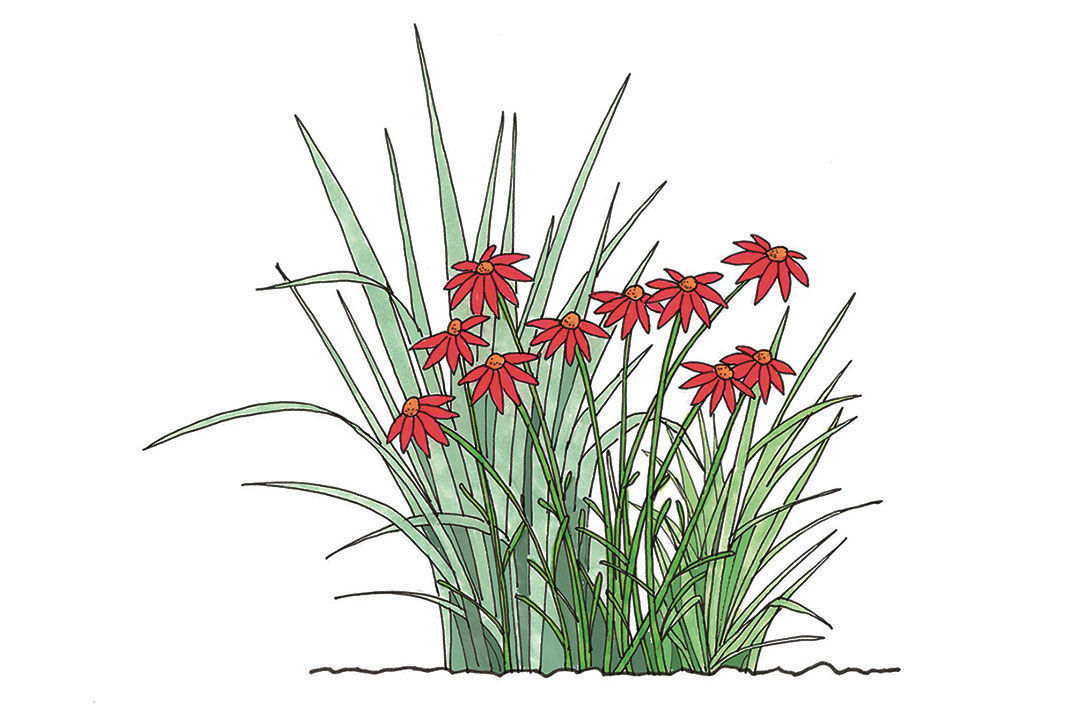
This is the hardest coneflower shape to work with. Tall coneflowers, like ‘Tomato Soup’, need to have a mass (like a grouping of ornamental grasses or a perennial with dense foliage) planted behind them so that they can stand out.
Stephanie Cohen is known across the garden world as the “Perennial Diva.” Each year, she trials new plants in her Pennsylvania garden so that she can save the rest of us from buying plants destined for the compost heap.
The following mail-order plant sellers offer the widest selection of the coneflowers featured:
- Forestfarm, Williams, Ore.; 541-846-7269; www.forestfarm.com
- High Country Gardens, Santa Fe, N.Mex.; 800-925-9387; www.highcountrygardens.com
- White Flower Farm, Litchfield, Conn.; 800-503-9624; www.whiteflowerfarm.com
Illustrations: Martha Garstang Hill
Fine Gardening Recommended Products

Berry & Bird Rabbiting Spade, Trenching Shovel
Fine Gardening receives a commission for items purchased through links on this site, including Amazon Associates and other affiliate advertising programs.

National Wildlife Federation®: Attracting Birds, Butterflies, and Other Backyard Wildlife, Expanded Second Edition (Creative Homeowner) 17 Projects & Step-by-Step Instructions to Give Back to Nature
Fine Gardening receives a commission for items purchased through links on this site, including Amazon Associates and other affiliate advertising programs.

ARS Telescoping Long Reach Pruner
Fine Gardening receives a commission for items purchased through links on this site, including Amazon Associates and other affiliate advertising programs.

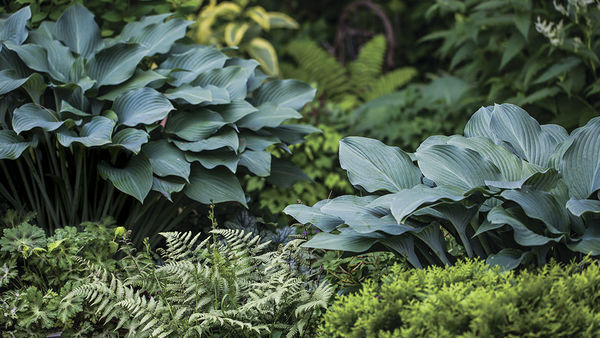
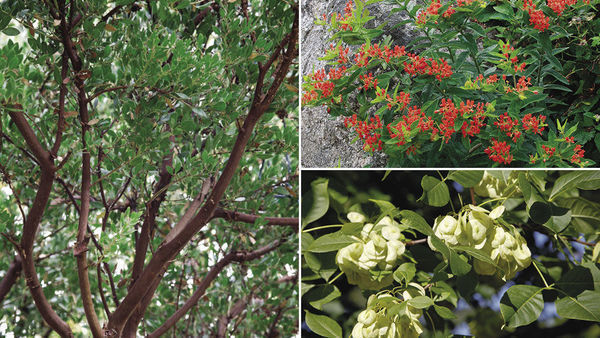
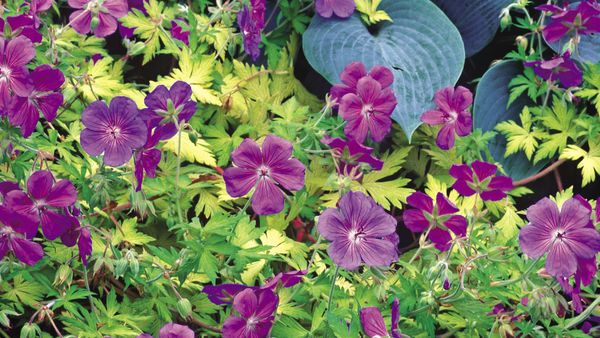
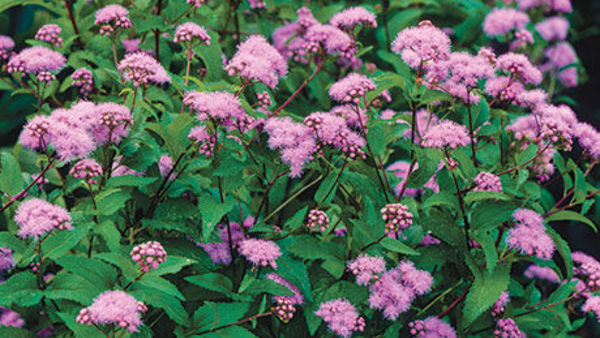













Comments
Log in or create an account to post a comment.
Sign up Log in